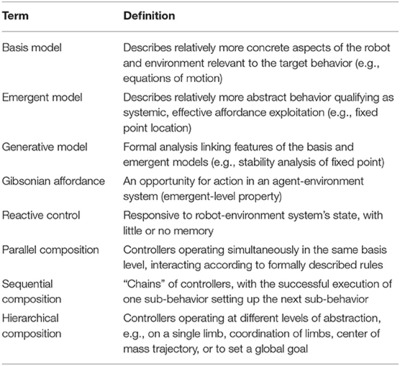
Evidence from empirical literature suggests that explainable complex behaviors can be built from structured compositions of explainable component behaviors with known properties. Such component behaviors can be built to directly perceive and exploit affordances. Using six examples of recent research in legged robot locomotion, we suggest that robots can be programmed to effectively exploit affordances without developing explicit internal models of them. We use a generative framework to discuss the examples, because it helps us to separate—and thus clarify the relationship between—description of affordance exploitation from description of the internal representations used by the robot in that exploitation. Under this framework, details of the architecture and environment are related to the emergent behavior of the system via a generative explanation. For example, the specific method of information processing a robot uses might be related to the affordance the robot is designed to exploit via a formal analysis of its control policy. By considering the mutuality of the agent-environment system during robot behavior design, roboticists can thus develop robust architectures which implicitly exploit affordances. The manner of this exploitation is made explicit by a well constructed generative explanation.

